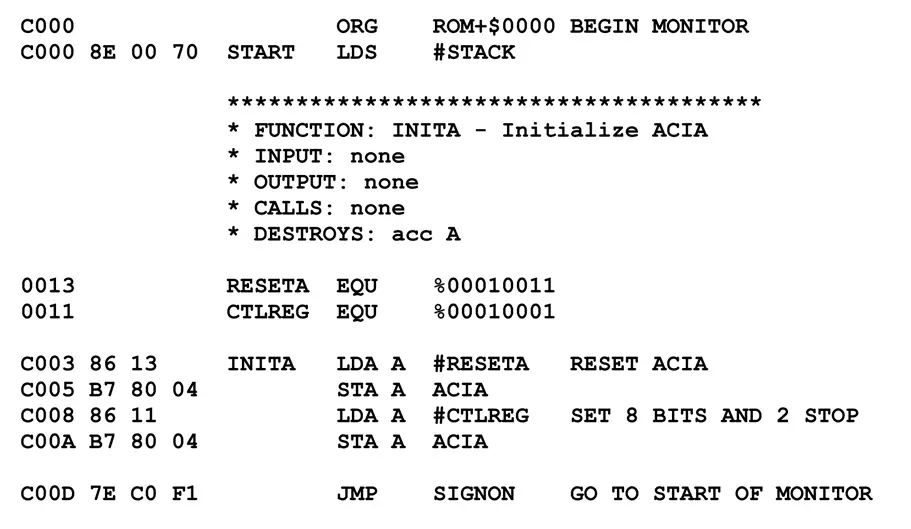The Art of Assembly Language Programming
Assembly language is a low-level programming language that provides direct access to the underlying hardware architecture of a computer. It is a step above machine code, which is the binary language directly understood by the processor. Assembly language is often used for writing operating systems, device drivers, and other software that requires close interaction with the hardware.

Benefits of Assembly Language Programming

- Speed and efficiency: Assembly language programs can run much faster than high-level language programs, as they bypass the need for a compiler or interpreter. This makes them ideal for applications where performance is critical, such as real-time systems and embedded devices.
- Direct hardware access: Assembly language allows programmers to directly manipulate hardware registers, memory, and peripherals. This provides unparalleled control over the computer’s operation and enables the development of software that is highly optimized for a specific hardware platform.
- Portability: While assembly language programs are generally written for a specific processor architecture, it is possible to write assembly language code that is portable across different platforms. By using assembly language macros and conditional compilation, programs can be adapted to different instruction sets and hardware configurations.
Challenges of Assembly Language Programming
- Complexity: Assembly language is a complex language that requires a detailed understanding of the underlying hardware architecture. Writing assembly language programs can be time-consuming and error-prone.
- Lack of abstraction: Assembly language provides very little abstraction from the hardware. This means that programmers must manually handle many tasks that are abstracted away in higher-level languages, such as memory management and variable typing.
- Platform dependence: Assembly language programs are tightly coupled to the specific hardware platform for which they are written. This makes it difficult to port assembly language code to different platforms.
Applications of Assembly Language
Assembly language is still widely used in the following areas:
- Operating systems: Many operating systems, such as Linux and Windows, are written in assembly language for performance reasons.
- Device drivers: Device drivers, which mediate between hardware devices and the operating system, are often written in assembly language for direct hardware access.
- Embedded systems: Assembly language is a popular choice for writing firmware for embedded systems, such as microcontrollers and microprocessors.
- Real-time systems: In real-time systems, where response times are critical, assembly language is used to create highly efficient and responsive software.
Conclusion
Assembly language programming is a complex but powerful craft that can unlock the full potential of a computer’s hardware. While it is not as widely used as high-level languages, it remains an essential tool for writing highly efficient and portable software. For those who master the art of assembly language programming, the rewards can be significant.## The Craft Of Low-level Programming In Assembly
Executive Summary
Low-level programming in assembly is a highly specialized skill that enables developers to interact directly with the hardware, providing unparalleled control and optimization for critical systems. This intricate craft requires a deep understanding of computer architecture, instruction sets, and memory management, empowering programmers to create efficient, performant, and highly tailored software solutions.
Introduction
Assembly language is a low-level programming language that bridges the gap between high-level languages and the machine code understood by the processor. It offers a direct representation of processor instructions, providing granular control over hardware resources and allowing programmers to optimize code for specific platforms and architectures. The use of assembly programming is particularly valuable in embedded systems, operating systems, hardware drivers, and performance-critical applications.
FAQ
- What is the difference between assembly language and machine code?
Machine code is the binary representation of instructions understood by the processor, while assembly language is a human-readable version of machine code. Assembly instructions correspond to specific machine instructions, offering a layer of abstraction and simplifying the development process. - Why is assembly language still used?
Assembly language provides unparalleled control and optimization for critical systems, enabling developers to fine-tune code for specific hardware and performance requirements. It is particularly valuable in areas where speed, efficiency, and low-level access to hardware resources are essential. - Is assembly language difficult to learn?
Assembly programming requires a deep understanding of computer architecture and instruction sets, making it a challenging but rewarding skill to master. However, modern development tools and resources can simplify the learning process, providing comprehensive documentation and support for various platforms and processors.
Top 5 Subtopics
1. Instruction Sets
- Instruction sets define the set of operations that a processor can perform.
- Different processors have different instruction sets, optimized for specific architectures and applications.
- Understanding instruction sets is crucial for efficient code generation and optimizing performance.
2. Memory Management
- Assembly programmers must manage memory resources explicitly.
- This includes allocating memory, accessing data, and handling memory segmentation.
- Effective memory management is essential for ensuring code correctness and preventing memory-related errors.
3. Processor Architecture
- Assembly programmers need to understand the underlying processor architecture.
- This includes the number of registers, addressing modes, and data types supported.
- Familiarity with processor architecture enables efficient register usage and optimized code execution.
4. Assembly Syntax
- Assembly language has its own syntax and conventions, varying across different processors.
- Programmers must follow the syntax rules precisely to ensure code correctness and avoid errors.
- Syntax knowledge enables effective code writing, debugging, and maintenance.
5. Assemblers and Linkers
- Assemblers translate assembly code into machine code.
- Linkers combine multiple assembly modules into a single executable program.
- Understanding assemblers and linkers is essential for the build process and ensuring code compatibility.
Conclusion
Low-level programming in assembly remains a vital skill for developers seeking unparalleled control and optimization of critical systems. By mastering the intricacies of assembly programming, developers can create highly efficient, performant, and tailored software solutions that leverage the full capabilities of hardware platforms. Whether it’s embedded systems, operating systems, hardware drivers, or performance-intensive applications, assembly programming empowers developers to craft software that meets the most demanding requirements.
Keyword Tags
- Assembly Programming
- Low-level Programming
- Computer Architecture
- Instruction Sets
- Code Optimization

